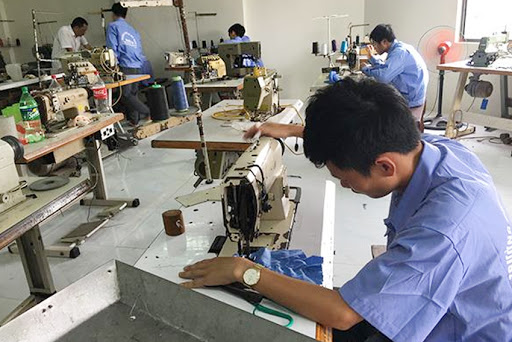Requirements for Knowledge in Garment Equipment Repair at College Level
From February 10, 2019, Circular 47/2018/TT-BLDTBXH issued by the Ministry of Labor, Invalids and Social Affairs (MOLISA) regulating the minimum knowledge volume and competency requirements that learners must achieve after graduating from intermediate and college levels in mechanical engineering and technical fields takes effect.

Requirements for Higher Education in Repairing Sewing Equipment - Illustration
According to the regulations on the minimum knowledge volume and competency requirements that learners must achieve after graduating from the vocational intermediate level and college level in the field of repairing sewing equipment, issued together with Circular 47/2018/TT-BLDTBXH, the minimum knowledge that learners must achieve after graduating in the field of repairing sewing equipment at college level is as follows:
- Present methods to measure and inspect the safety of machine joints and general-purpose mechanical structures; actuating mechanisms in sewing equipment;- Describe the equipment systems in the garment industry and the methods for organizing and managing the maintenance and repair of equipment in garment factories;- Present the structure and methods of using commonly used tools in the maintenance and repair of sewing equipment;- Analyze the structure and working principles of single-needle machines, double-needle machines, flat-bed buttonhole machines, button attaching machines, overlock machines, bar-tacking machines, binding machines, and hand-push fabric cutting machines;- Analyze the structure and operating principles of certain electrical circuits, electronic components, electrical apparatuses, and typical electric machines in sewing equipment;- Analyze the procedures for maintaining, repairing, and calibrating the mechanical parts of single-needle machines, double-needle machines, flat-bed buttonhole machines, button attaching machines, overlock machines, bar-tacking machines, binding machines, and hand-push fabric cutting machines according to technical standards;- Analyze the procedures for disassembling, assembling, maintaining, and repairing power circuits, control circuits, motors, and electromagnets in typical electronic sewing equipment to meet the standard working conditions of sewing equipment;- Analyze the procedures for evaluating and selecting technology for garment enterprises;- Advise enterprises on the investment in equipment applying green technology and Industry 4.0;- Analyze methods for collecting and treating certain basic industrial wastes generated during the maintenance and repair of sewing equipment;- Analyze the methods for managing sewing equipment, supervising the assembly line of sewing equipment, organizing the business of sewing equipment, and organizing the transfer of technology for garment factories;- Analyze the causes of common defects and the measures for prevention, handling during the repair of sewing equipment, hand-push fabric cutting machines, and the creation of jigs and fixtures;- Analyze the methods for planning, implementing, leading, and inspecting the assigned tasks;- Present basic knowledge on politics, culture, society, law, national defense and security, and physical education according to regulations.
For detailed content, see Circular 47/2018/TT-BLDTBXH, issued on December 28, 2018.
Le Vy
- Responsibilities of officials of the Ministry of Finance of Vietnam when they are issued Official Passports from November 19, 2024
- 06 solutions to enhance the effectiveness of social policy credit in the new phase in Vietnam
- Financial support level for the purchase and repair of transportation vehicles for the Economic - National Defense Corps in Vietnam from December 30, 2024
- Financial support levels for purchasing and repairing of medical equipment for the Economic - National Defense Corps in Vietnam from December 30, 2024
- Latest regulations on management and use of passports for officials and public employees of the Ministry of Finance of Vietnam
- New regulations on the procedures for veterinary sanitation inspection in Vietnam from January 6, 2025
-

- Responsibilities of officials of the Ministry ...
- 16:00, 23/11/2024
-

- 06 solutions to enhance the effectiveness of social ...
- 15:32, 23/11/2024
-

- Guidelines for registration and organization of ...
- 11:53, 23/11/2024
-

- Contents of audit service quality control in Vietnam
- 11:00, 23/11/2024
-

- Acts in violation of Law on Independent Audit ...
- 10:30, 23/11/2024
 Article table of contents
Article table of contents
